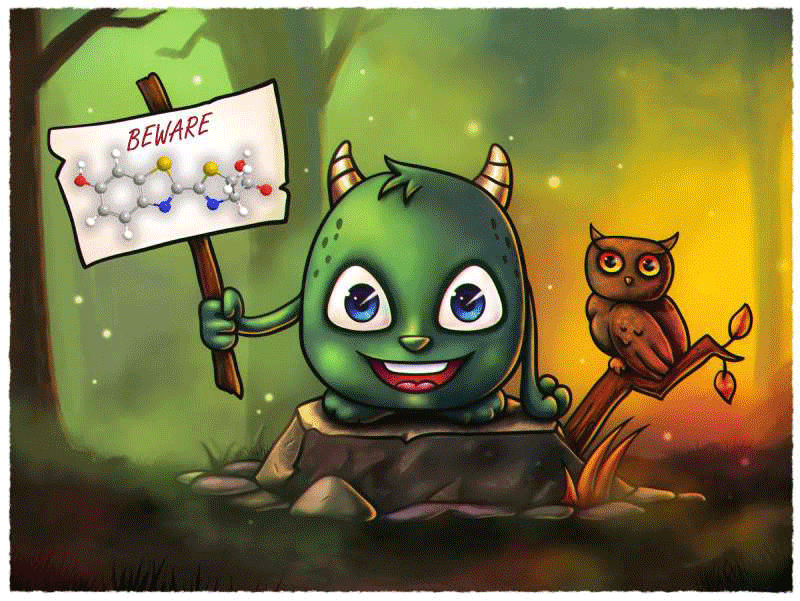
From The Merck Index, 10th edition: “Light emission in the American firefly, Photinus pyralis, has been shown to involve the interaction of magnesium ion, oxygen, ATP [the coenzyme adenosine triphosphate], the enzyme luciferase, and the oxidizable substrate luciferin.” Photinus is one genus of the firefly family Lampyridae.
In 1957, B. Bitler and W. D. McElroy at Johns Hopkins University isolated 9 mg of luciferin from ≈15,000 Japanese fireflies (Luciola cruciata). McElroy, E. H. White, and co-workers elucidated its structure and synthesized it in the lab in the early1960s.
Crystalline luciferin is fluorescent; it absorbs 327-nm UV radiation and emits visible light at 530 nm. Light emitted from fireflies ranges from green (510 nm) to red (670 nm). Luciferin has been used in an assay for ATP, with a sensitivity for the coenzyme in solution as low as 10–11 M.
The name luciferin comes from the Latin lucifer, or light-bearer. Lucifer, of course, in Christian tradition is the name of Satan before his fall. So if it’s warm enough to see fireflies on Halloween, you can blame it on climate change and the devil.
MOTW update:
August 31, 2020
Firefly luciferin, as its name implies, the molecule is essential for fireflies to emit light. The catalyst for the light-producing reaction is the enzyme luciferase, which may be useful in the quest for testing for COVID-19 infections and for developing drugs to combat the disease. Pei-Yong Shi and colleagues at the University of Texas Medical Branch at Galveston found that the bright light generated by luciferase allows them to visually detect antibodies against the SARS-CoV-2 virus several times faster than other methods. Likewise, the authors expect that luciferase will accelerate the development of therapies and vaccines against the virus.

Learn more about this molecule from CAS, the most authoritative and comprehensive source for chemical information.
Molecule of the Week needs your suggestions!
If your favorite molecule is not in our archive, please send us a message. The molecule can be notable for its current or historical importance or for any quirky reason. Thank you!
Stay Ahead of the Chemistry Curve
Learn how ACS can help you stay ahead in the world of chemistry.

